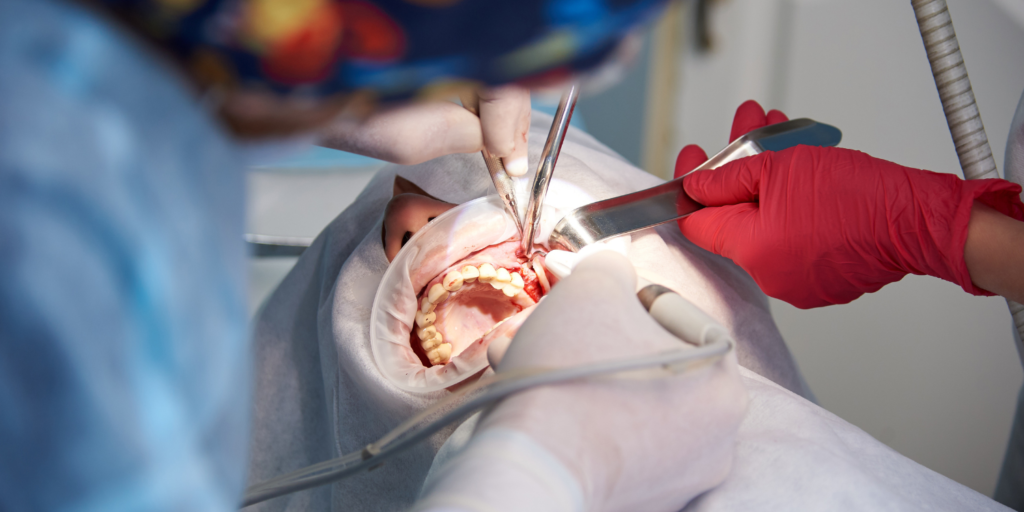
Address:
16052 Beach Boulevard #120,
Huntington Beach, CA, 92647.
Sinus lifting surgery, performed by Dr. Kiet Tran, involves creating space in the upper jaw by gently lifting the sinus membrane and placing bone graft material to support dental implants, ensuring a solid foundation for a restored smile.
Are you in need of a dental procedure that involves sinus lifting or bone grafting? Look no further than Dr. Kiet Tran, your trusted expert in wisdom teeth removal and dental implant surgery. Sinus lifting, often required for dental implant placement, is a delicate and precise procedure that Dr. Tran specializes in. Here, we’ll walk you through what happens during a sinus lifting surgery and how Dr. Kiet Tran takes exceptional care of his patients throughout the process.
Sinus lifting, also known as sinus augmentation or sinus floor elevation, is a dental surgical procedure designed to create space in the upper jaw for the placement of dental implants. This procedure is typically required when a patient’s upper jaw lacks sufficient bone density or height to support implants. Here’s an overview of what happens during a sinus lifting surgery:
Initial Consultation: Dr. Kiet Tran will start by conducting a thorough examination and assessment of your oral health. He’ll use advanced imaging techniques, such as CT scans, to precisely plan the surgery.
Anesthesia: Before the procedure begins, Dr. Tran will administer local anesthesia to ensure that you’re comfortable and pain-free throughout the surgery. You may also discuss sedation options for added relaxation if desired. Learn more about our Sedation Dentistry.
Creating a Surgical Site: Dr. Tran will make a small incision in the gum tissue to access the bone beneath. This allows him to reach the sinus membrane.
Lifting the Sinus Membrane: The sinus membrane is gently lifted, and a bone grafting material is placed in the newly created space. This grafting material can be sourced from various places, including your own body, donor tissue, or synthetic materials.
Implant Placement: Once the bone graft is in place, Dr. Kiet Tran will carefully insert the dental implant(s) into the augmented area. These implants will serve as the foundation for your new teeth. Learn more about our dental implant procedures.
Closure and Recovery: After ensuring that everything is securely in place, the incision is closed with sutures. You’ll receive post-operative care instructions to facilitate a smooth recovery.
Dr. Kiet Tran’s commitment to patient care is what sets him apart as a dental specialist. Throughout your sinus lifting surgery and the entire treatment process, you can expect:
Expertise and Precision: Dr. Tran is a highly skilled surgeon with years of experience in complex dental procedures. He employs the latest techniques and technology to ensure the best possible outcomes for his patients.
Compassion and Communication: Dr. Tran believes in open and honest communication. He will take the time to answer your questions, explain the procedure, and address any concerns you may have.
Comfort and Safety: Your comfort and safety are paramount. Dr. Tran and his team use advanced anesthesia and sedation methods to ensure that you feel at ease throughout your treatment.
Personalized Care: Dr. Tran understands that every patient is unique. He tailors his treatment plans to your specific needs, ensuring the best results for your oral health.
If you’re considering sinus lifting surgery or any other dental procedure, trust Dr. Kiet Tran to provide the highest level of care and expertise. Contact us today to schedule your consultation and take the first step toward restoring your smile with confidence. Your journey to a healthier, more beautiful smile starts here.
Bone grafting, or regenerative surgery, is a minor surgical procedure used to create new bone growth in mouth areas where bone has been lost. This typically occurs due to periodontitis, extractions, infection, long–term denture wearing, etc. Bone loss commonly results from tooth loss, as when a tooth is missing, its supporting bone, known as alveolar bone, tends to disappear or become reabsorbed. Bone grafting helps to restore the lost bone, as bone tissue has the potential to regrow when provided with the right conditions in which to do so.

As per FDA, the bone grafting material is a medical item used to reconstruct and fill defects in oral and maxillofacial areas, usually composed of hydroxyapatite, tricalcium phosphate, polylactic and polyglycolic acids, or collagen. Different sources for such materials include bone taken from the same patient, animals, carcasses, and synthetic bone. Additionally, growth factor additives are sometimes utilized.
Bone grafting is a surgical procedure used to fix a damaged or missing bone. By taking a small piece of healthy bone from one area of the body and transplanting it in another area, the patient’s body can heal and rebuild a damaged or missing bone.
Bone grafts are needed for a variety of reasons, but some of the most common ones include repairing fractures, improving joint mobility, replacing missing or damaged bones, and strengthening weak bones.
The time it takes for a bone graft to heal depends on several factors, including the type of procedure performed, the patient’s age and the health of the surrounding tissue. In general, it can take anywhere from a few weeks up to six months for the graft to fully heal and for the patient to regain functional use of the area.
Sinus lift surgery is a procedure that adds new bone to the upper jaw in the area of the molars and premolars, to make more space for dental implants. It is usually required when the sinuses are too close to the upper jaw for a dental implant to be inserted. During the procedure, a small window is created in the bone below the sinus, and bone graft material is placed to lift the sinus floor and allow for the placement of the dental implants.
Patients who suffer from sinusitis or atrophic maxillae (receding bone) may need a sinus lift in order to receive dental implants.
You will only feel a slight pressure during the procedure. Anesthesia is used to make it painless, and most patients do not experience any discomfort.
In most cases, a sinus lift can last up to 15 years or more, with proper oral hygiene and regular dental checkups.
A sinus lift is a kind of bone graft procedure performed when a patient has either extreme bone loss in their maxilla or a pneumatized maxillary sinus. It is typically required when a person‘s jaw anatomy is too large for dental implants or alveolar bone loss from missing teeth. The maxillary sinus around the cheek area is the closest part of the sinus system to our teeth, which is why people sometimes get toothaches when they have congestion or a cold – the pressure from the sinuses transfers down to the tooth roots. A sinus lift is required to create more space for the implant, allowing the patient to get the needed implants.

Immediately after surgery, apply pressure using a folded piece of gauze over the grafted area for at least 20–30 minutes. It may be necessary to change the gauze a few times to control bleeding. Avoid activities that may put unnecessary pressure on the sinus for at least a week following surgery, such as sucking on a straw or blowing your nose. You may experience some minimal drainage from the sinus, which is normal. Add ice packs to your face for the first 24 hours to reduce swelling. Take prescribed pain relief medications as soon as possible.
Following surgery, special precautions should be taken, such as avoiding rinsing your mouth vigorously for the first 24 hours, not smoking, and not drinking alcohol. If excessive bleeding happens, apply firm pressure by folding a gauze pad over the surgical site and biting firmly on it for one hour. If it continues for more than 15–20 seconds after removing the gauze, apply a new pad for 30 minutes. For pain management, it is best to fill the prescription as soon as possible and take the medications the surgeon prescribes. If an antibiotic has been defined, complete the entire course. In the case of excessive nausea, temporarily stop taking the antibiotic until it subsides, then restart it.
Swelling around the mouth, eyes, and cheeks is normal and should decrease after 2–3 days. Applying ice packs and keeping the head elevated helps reduce swelling. Once the swelling has settled, resume a regular diet but avoid hard and crunchy food, and no alcoholic beverages should be consumed for at least 24 hours after anesthetic or as long as you are taking the narcotic pain medications and antibiotics. Peridex (chlorohexidine 0.12%) rinse may be recommended 2–3 times a day after brushing, while rinsing the mouth with salt–water solution several times a day is also encouraged. The sutures will dissolve independently 1–3 weeks after the surgery. Take 1–2 days off from regular activity, avoid strenuous activities for 2 weeks, and return to regular exercise when you recover. If partial or complete dentures are prescribed, use as directed. Lip numbness may also occur and continue for a variable length of time.
Sinus Lift: Procedure, Cost, Recovery, and More (healthline.com)

Address:
16052 Beach Boulevard #120,
Huntington Beach, CA, 92647.
Copyright©2023 The Wisdom Teeth Guru | Powered by Digital Maxima